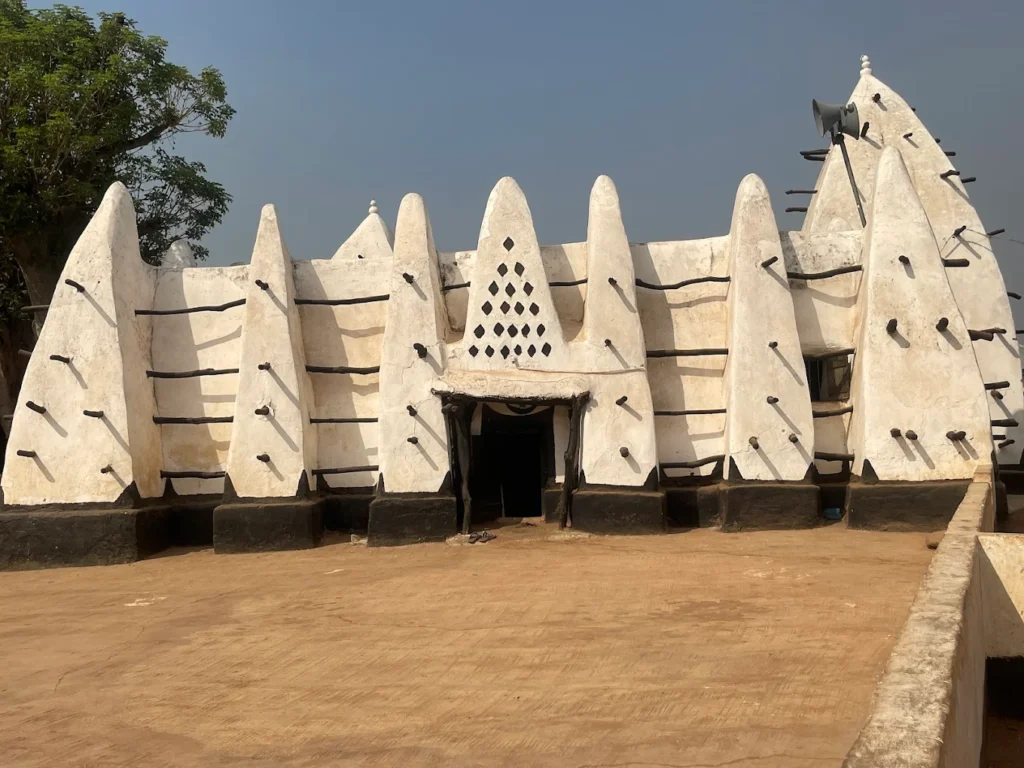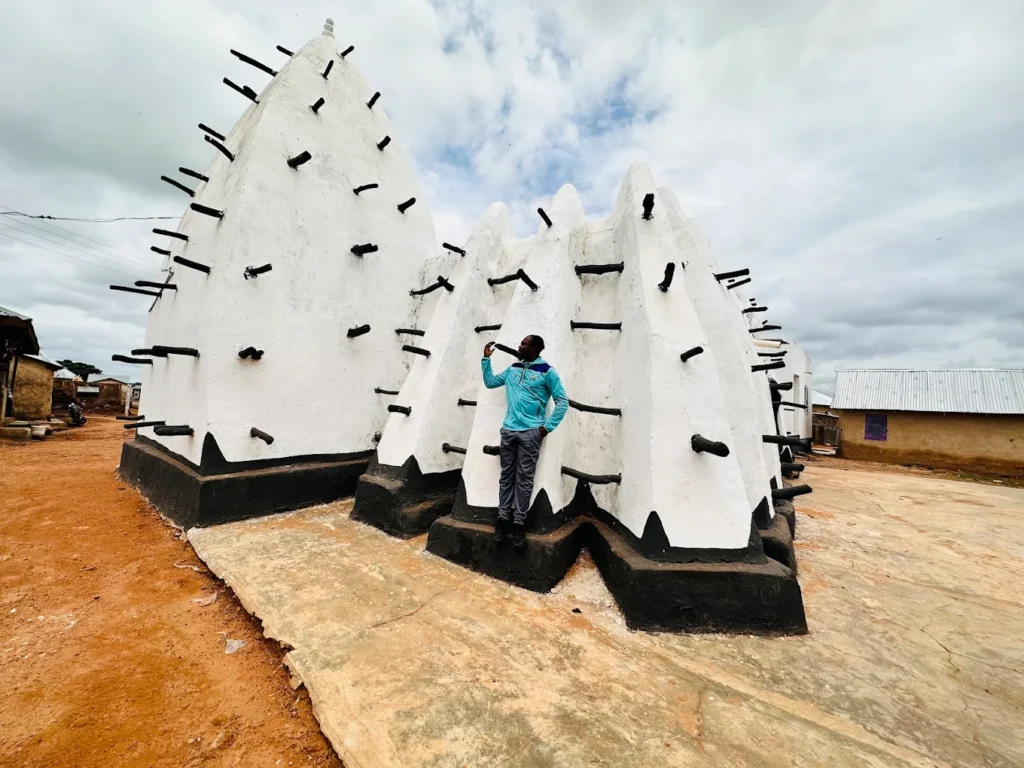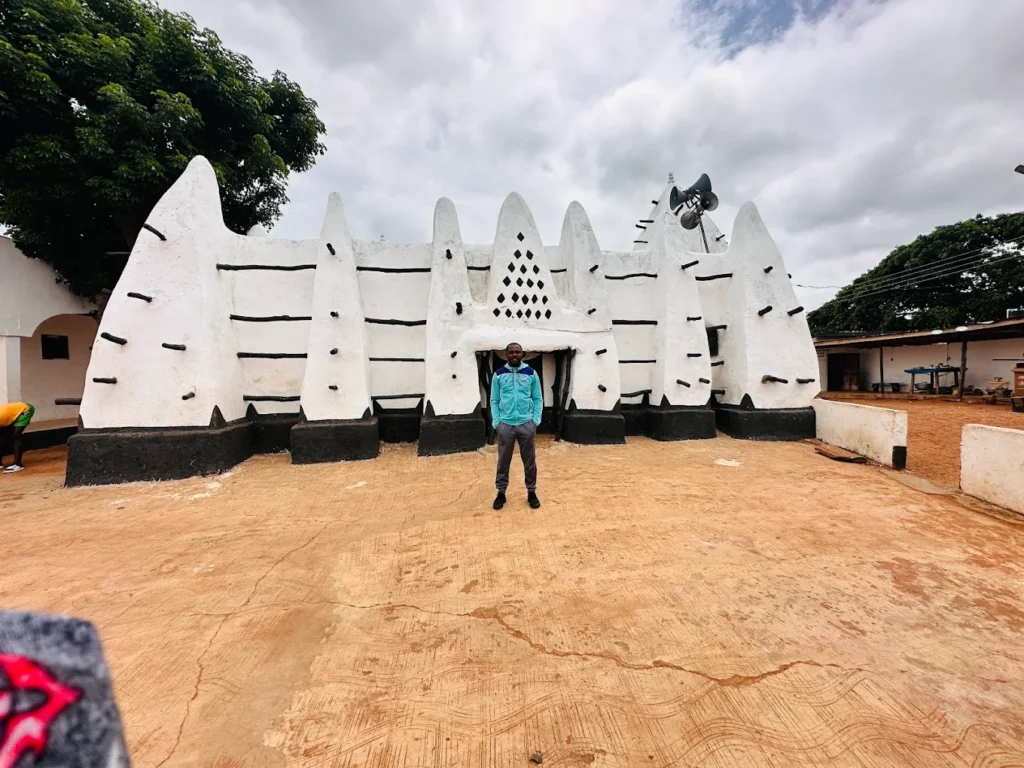The Larabanga Mosque
Nestled in the town of Larabanga near Damongo, the Larabanga Mosque is believed to be the oldest mosque in Ghana and West Africa. Built in the traditional Sudanese mud-and-stick architectural style, the mosque dates back to around 1421 and is revered for its spiritual and historical significance.
Larabanga Mosque: The Mecca of West Africa
According to legend, an Islamic trader named Ayuba received a divine vision instructing him to build the mosque. By morning, the foundation had miraculously appeared. Today, the mosque remains a sacred place of worship and pilgrimage, with a baobab tree beside it marking Ayuba’s burial site. The mosque features four distinct entrances for the chief, men, women, and the muezzin, and houses a centuries-old Koran believed to have descended from heaven. Non-Muslims are not permitted to enter, preserving its sanctity. Recognized on the World Monuments Fund’s List of 100 Most Endangered Sites, the Larabanga Mosque stands as a living monument of faith, culture, and history in the Savannah Region.



History of the Mosque
Islam entered Northern Ghana through trans-Saharan trade routes used by Mande warriors, traders, and missionaries. These routes, active since the 10th century, brought both commerce and faith. As traders rested or settled, they spread Islam, leading to conversions and the construction of mosques—some of which, built as early as the 17th century, still stand today.
Architectural style
The Larabanga Mosque is built in the traditional Sudanic-Sahelian style using local mud and reeds. Its distinctive features include two pyramidal towers—one for the mihrab facing Mecca and another as a minaret—along with 12 conical buttresses reinforced with horizontal timber beams. The mosque’s whitewashed finish and irregular elevations give it a striking, enduring presence.
Directions to the Larabanga Mosque
Larabanga is situated 10 miles (16 km) west of Damongo and only about 5 miles to the Mole National Park. Damongo is about 72 miles west of Tamale.
